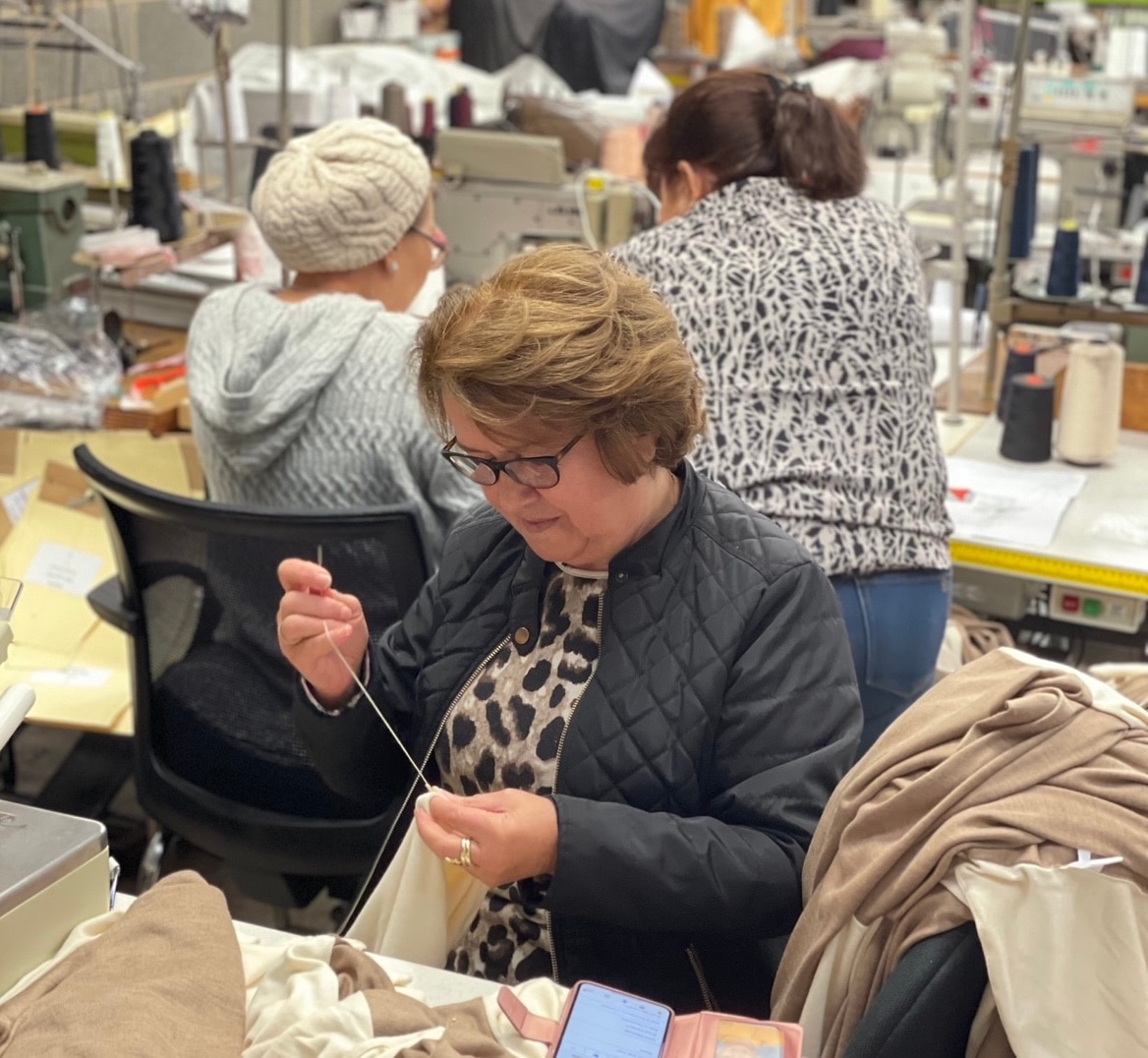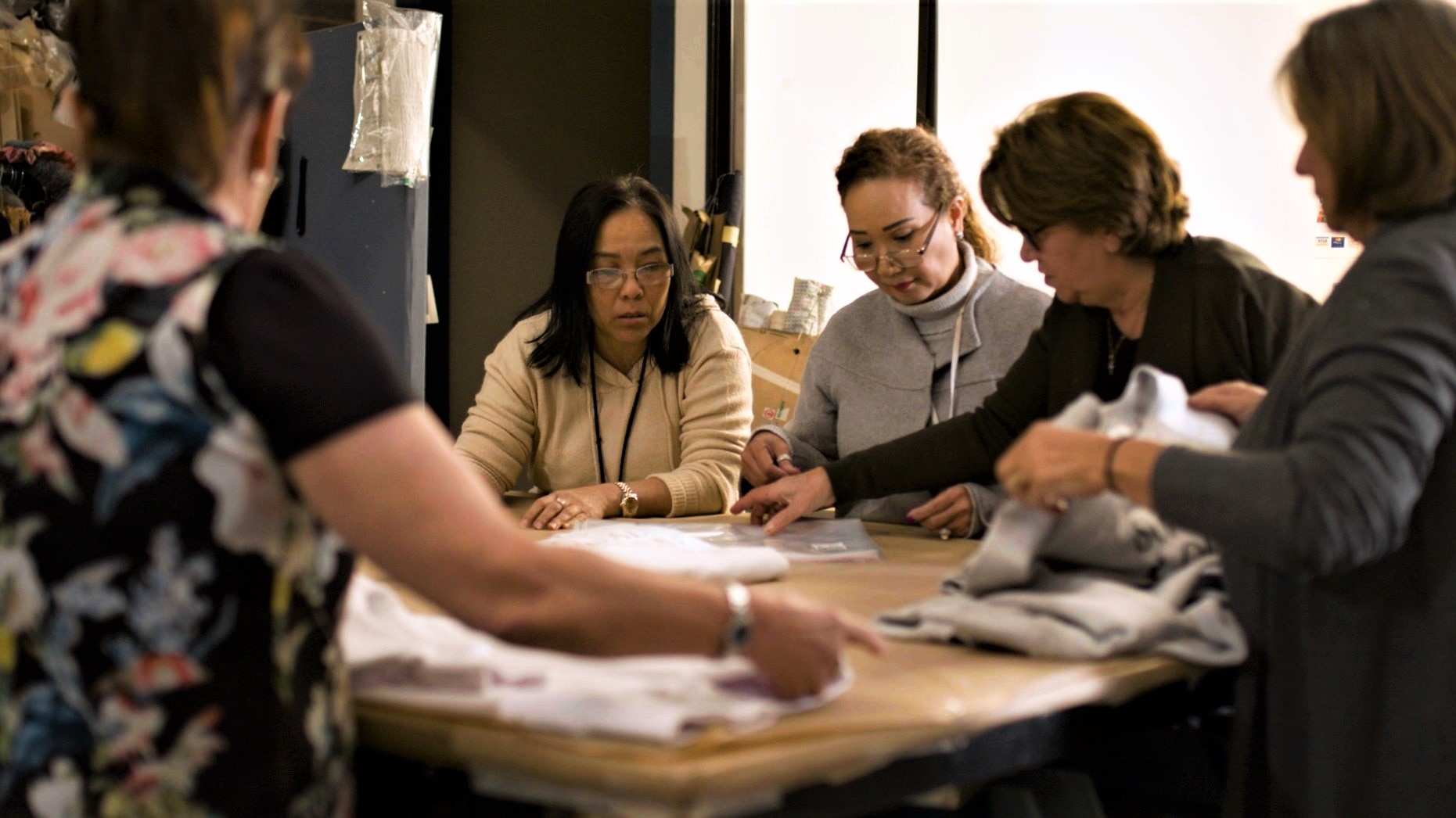When Vicky Skorsis began her own garment business 37 years ago, she made clothes in a small workshop in Melbourne's inner city for a vibrant Australian fashion scene.
“We were very busy and grew very quickly, so soon after we moved to a bigger factory in Lygon Street, East Brunswick,” she said.
Her business, CGT Australia, is still based in Brunswick, and at the age of 70, she remains hands-on, producing clothes for some of Melbourne's biggest fashion names.
But a lot has changed in the rag trade in recent years. Almost 75 per cent of Australian clothing is now imported from China, and more recently Ms Skorsis’ business has struggled with financial disruption during the COVID-19 pandemic.
Ms Skorsis is a mother of three and in business with her son, Phillip. They were working on a substantial order of garments when Melbourne went into lockdown last year. Their clients cancelled the order so they were not paid.
“We looked at each other and said 'what do we do?'” Ms Skorsis said. “We had to tell the staff to go home, it was devastating.”
They survived, like many other garment makers, by pivoting to making personal protective equipment (PPE).
“Phillip went out and found fabric and I did the patterns, and that kept us going. It saved the business."
Support local
Born in a town in northern Greece to a family of garment makers, Ms Skorsis began making clothing for a living after she migrated to Australia with her father in 1967. She had a successful career and rose to become a general manager of a leading Melbourne garment manufacturer before striking out on her own.
“But in the 1990s, most of the bigger fashion houses began getting their clothing made in China because it was cheaper,” she said.
For the Skorsis family, the COVID-19 pandemic came with a silver lining.
“In the past year, we have seen the 'Made in China' trend reverse. Everyone wants locally produced and we are inundated with calls with people wanting Australian-made garments,” Phillip Skorsis said.
One of their Melbourne clients is corporate lawyer turned retail entrepreneur Kate Dillon. She started out by selling handbags online through her She Lion brand and her new line of sweatshirts supports an all-Australian supply chain.
“I wanted to do something that was completely Australian made that could benefit many other small businesses that were also suffering,” Ms Dillon said.
“And it would also make buyers feel good to know they were supporting 22 Australian businesses in the process.”
Phillip Skorsis agrees.
“The garments are wholly made in Australia; all the fabric is made here, [sweatshirts] are stitched here, the washing is done here. The whole thing from zero to wear is local,” he said.
“We really support what she is doing, it’s a good thing for the industry. We would like others to follow her initiative,” Ms Skorsis said.
Until this year, only four per cent of clothes sold in Australia were manufactured locally, and much of that was made using Chinese fabric and yarns, according to United Nations trade data.
About 80 per cent of men’s underwear, 90 per cent of handkerchiefs and as much as 98 per cent of some categories of cotton fabric also come from China.
“COVID has really woken people up to how dependent we are on overseas manufacturing and that we need to be more self-sustainable here,” Ms Dillon said.
In a recent report, The Australian Fashion Council (AFC) defined this as a "critical time for the Australian fashion and textile industry", which contributes more than $27 billion to the local economy and employs almost 500,000 workers.
The AFC said during the pandemic, business costs have also risen 14 per cent due to supply chain disruptions and difficulty sourcing fabrics and materials offshore. With higher costs and many bricks and mortar retailers closed during the lockdowns, the local sector is struggling.
“We need more avenues to sustain our own businesses here in Australia,” Ms Dillon said.
Sales of her Support Local sweatshirts have sold out and a second run is on order, although production is affected by the latest Melbourne lockdowns.
“We've been completely blown away, to be honest, by the public reaction. It is heart-warming,” she said.
“It's bringing people together in the community. It is something to feel good about, when everything is so hard.
“People want to get behind Australian made, this is something that is giving people hope.”
Ms Skorsis welcomed the move to producing more garments in Australia.
“Shoppers are switching on. By buying locally made, they support the working class of Australia, who are the people making these garments,” she said.
Why buying local matters to Australia's fashion businesses now more than ever - SBS News
Read More




No comments:
Post a Comment